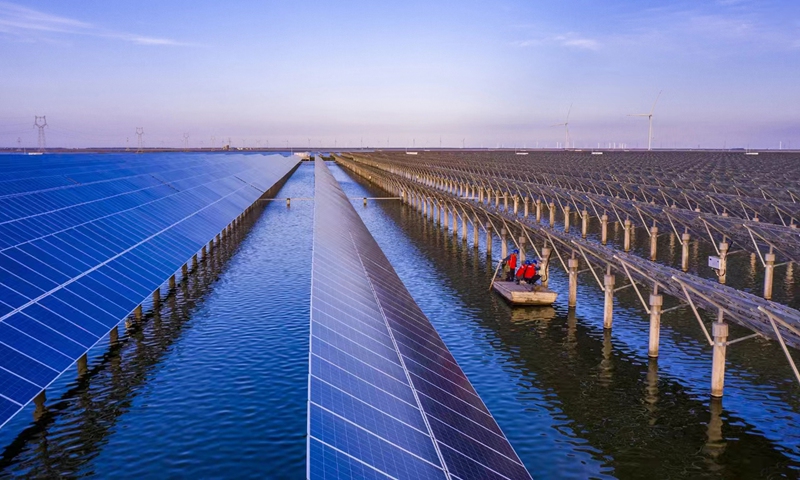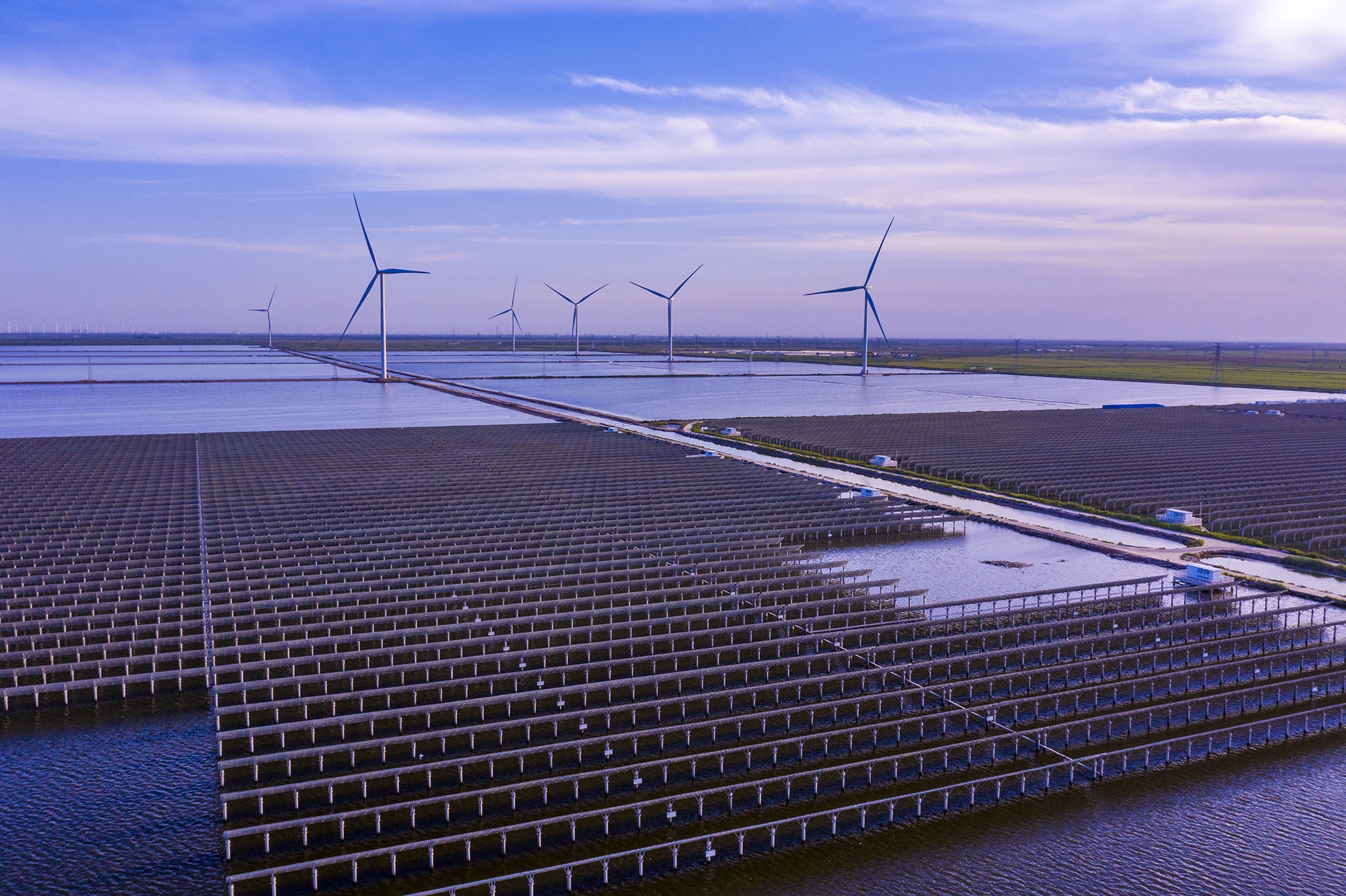SOURCE / PRESS RELEASE
East China's Shandong Province promotes construction of integrated base for wind, solar energy storage and transmission, building new blueprint for sustainable development

Photo: State Grid Binzhou Power Supply Company
In order to help achieve China's double carbon goals, East China's Shandong Province plans to build an integrated base of wind and solar energy storage and transmission in the saline alkali mudflat to the north of the city of Binzhou. The base plans to add 18.48 million kilowatts of installed capacity, including 15.8 million kilowatts of photovoltaic power generation and 2.68 million kilowatts of wind power.
The State Grid Binzhou Power Supply Company will support grid connection services of photovoltaic power stations, opening a green channel for photovoltaic grid connection, assigning teams responsible for grid connection business matching, and providing high-quality services to reduce processing work for customers, conducting photovoltaic operation and maintenance on customer photovoltaic projects after grid connection to ensure the safe operation of photovoltaic modules.

Photo: State Grid Binzhou Power Supply Company
Tonghui Photovoltaic Power Station is located in Binzhou's Binhai Town, and is one of the base projects. This power station covers an area of 7,800 acres (31.6 square kilometers) and fully utilizes three-dimensional space, integrating elements such as luminous energy and seawater, to create a "sunlight above and raising fish beneath" mode. The photovoltaic panels of the power station are installed at a fixed angle of 25°, which achieves the best power generation effect and also provide shading effect, allowing the water temperature in the shrimp pond below the photovoltaic panels to decrease by 1-2 C, effectively suppressing the deterioration of the water in the summer pond and preventing fish and shrimp diseases.
The total installed capacity of Tonghui Photovoltaic Power Station is 300,000 kilowatts, with an annual power generation capacity of 390 million kilowatt hours and an annual output of 370 tons of saltwater shrimp. The projects will achieve the integration of industry and fishing, with the second industry driving the first industry, helping farmers increase income and rural revitalization, and promoting the green transformation of the blue industry.
According to statistics, the power plant can generate 10.5 billion kilowatt hours of electricity after 25 years of operation, save 3.5 million tons of standard coal, reducing carbon dioxide emissions by about 8.87 million tons, and sulfur dioxide emissions by about 24,000 tons.
